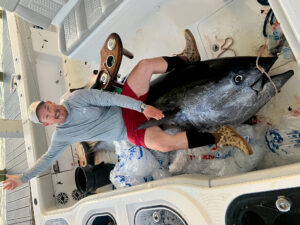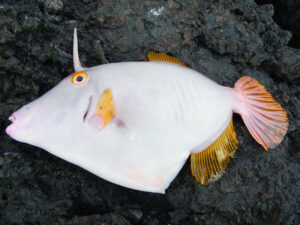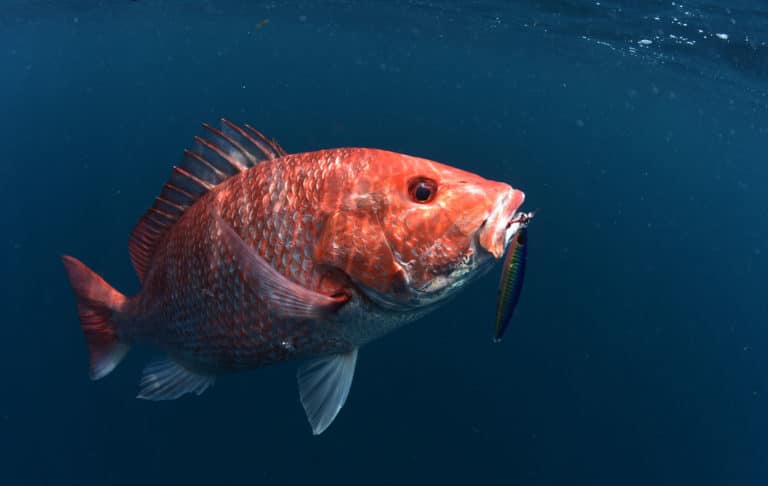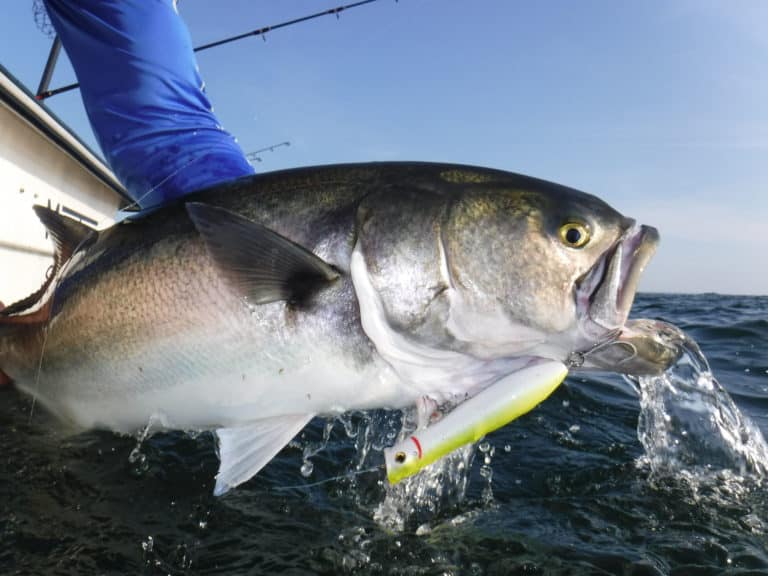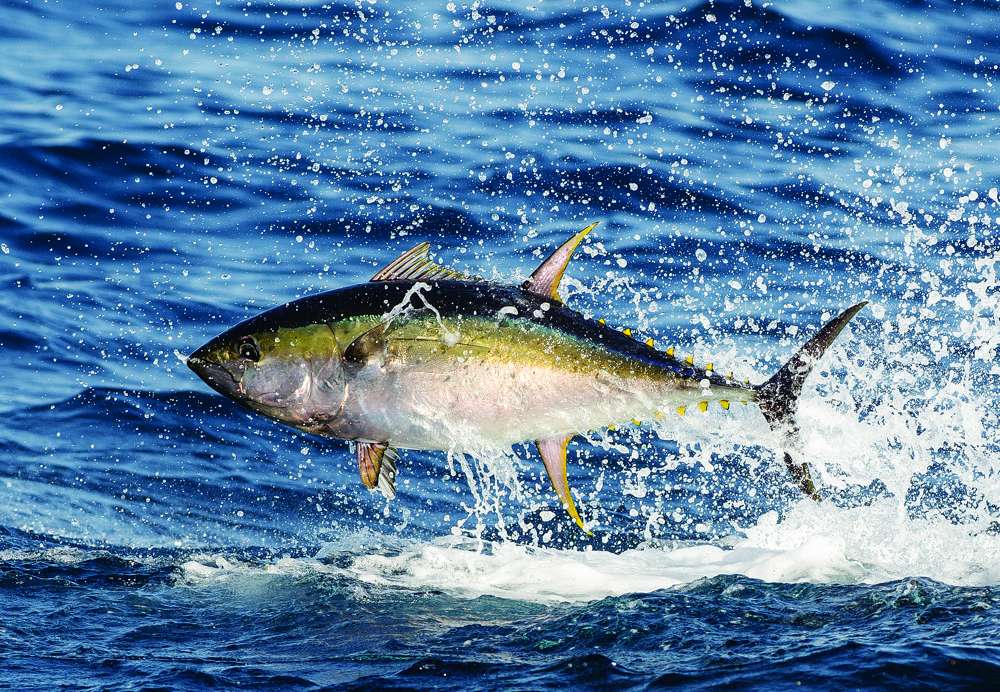
That the ocean’s most advanced and highly developed swimming machines are also among the most popular of game fishes with the world’s saltwater angling enthusiasts is hardly a coincidence. As anglers, we have tremendous respect for the spirited fighting qualities of tunas — difficult to release, should we wish to, because they truly will fight their hearts out when hooked. So what is it that makes tunas the über-fish of our oceans? The more we learn about our favorite game fish, the more fascinating they are.
Are Mackerels Tuna? What Are True Tunas?
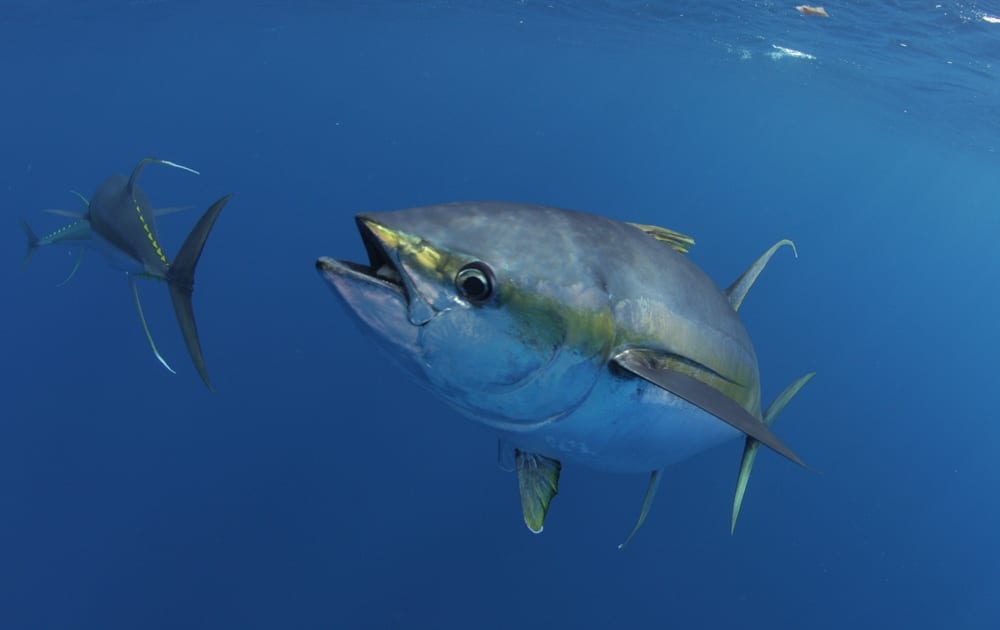
Tunas are part of the family Scombridae, which also includes mackerels, large and small. But there are tunas, and then there are, well, “true tunas.” Two groups (sometimes known as “tribes”) dominate the tuna clan. One is Thunnini, which is the group considered true tunas, characterized by two separate dorsal fins and a relatively thick body. The 15 species of Thunnini are albacore, bigeye, black skipjack, blackfin, bluefin (three species: Atlantic, Pacific, southern), bullet, frigate, kawakawa, little tunny, longtail, skipjack, slender and yellowfin.
The other tribe is Sardini; these tunas — the dogtooth tuna and several species of smaller true bonitos — are somewhat more mackerel-like (notably with a more elongated body and a row of sharp, conical teeth).
How do Tuna Swim so Fast and Hard?
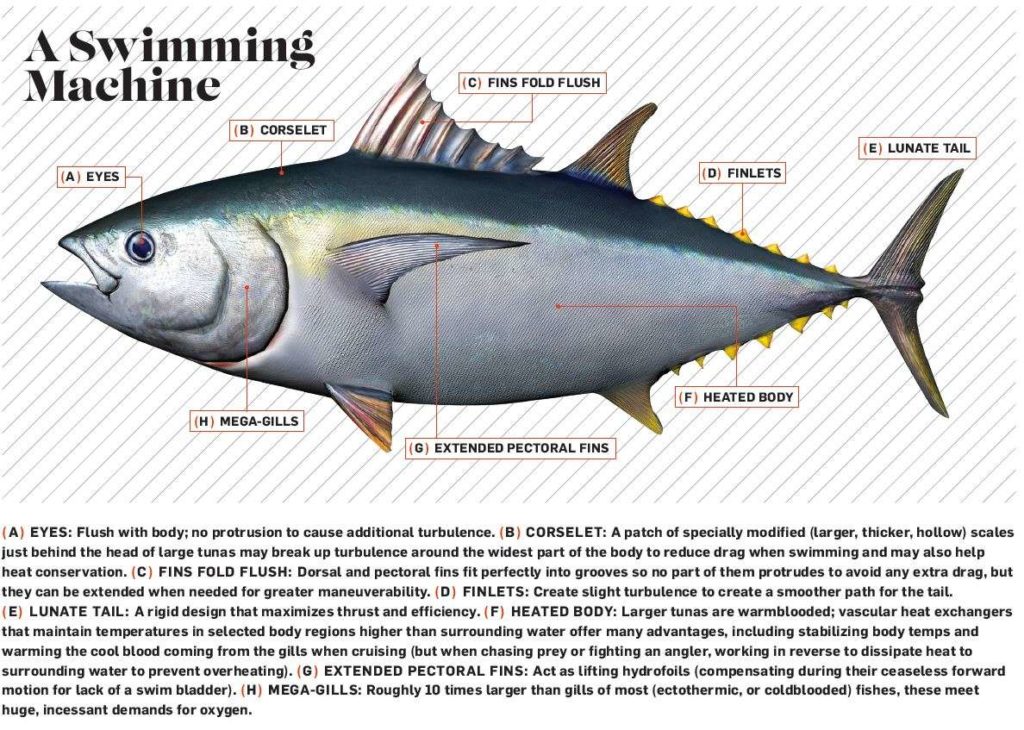
Sport fishermen know that when they hook a large tuna, they’re in for a long, drawn-out, relentless battle. Nothing characterizes tunas more than their powerful, tireless swimming. In fact, these fish have no choice but to swim endlessly: As explained more thoroughly below, they’re ram ventilators, meaning forward motion is required as they move with mouth open to force water past their gills.
Most fishes, such as groupers, snappers and jacks, can remain motionless and respire by opening and closing their mouths to push water through their gills. Tunas have lost the ability to do that (even if they could, such small pushes of water wouldn’t offer their large gills the tremendous flow they require to supply their systems with oxygen). A suitable motto for tunas, then, is “swim or die.”
How tunas have evolved to move efficiently through the water is reflected in their design, both externally and internally. Of their fusiform body shape (tapering fore and aft), Sport Fishing Fish Facts expert Ben Diggles says, “Their almost-perfect hydrodynamic shape minimizes drag with a very low drag coefficient,” optimizing efficient swimming both at cruise and burst.
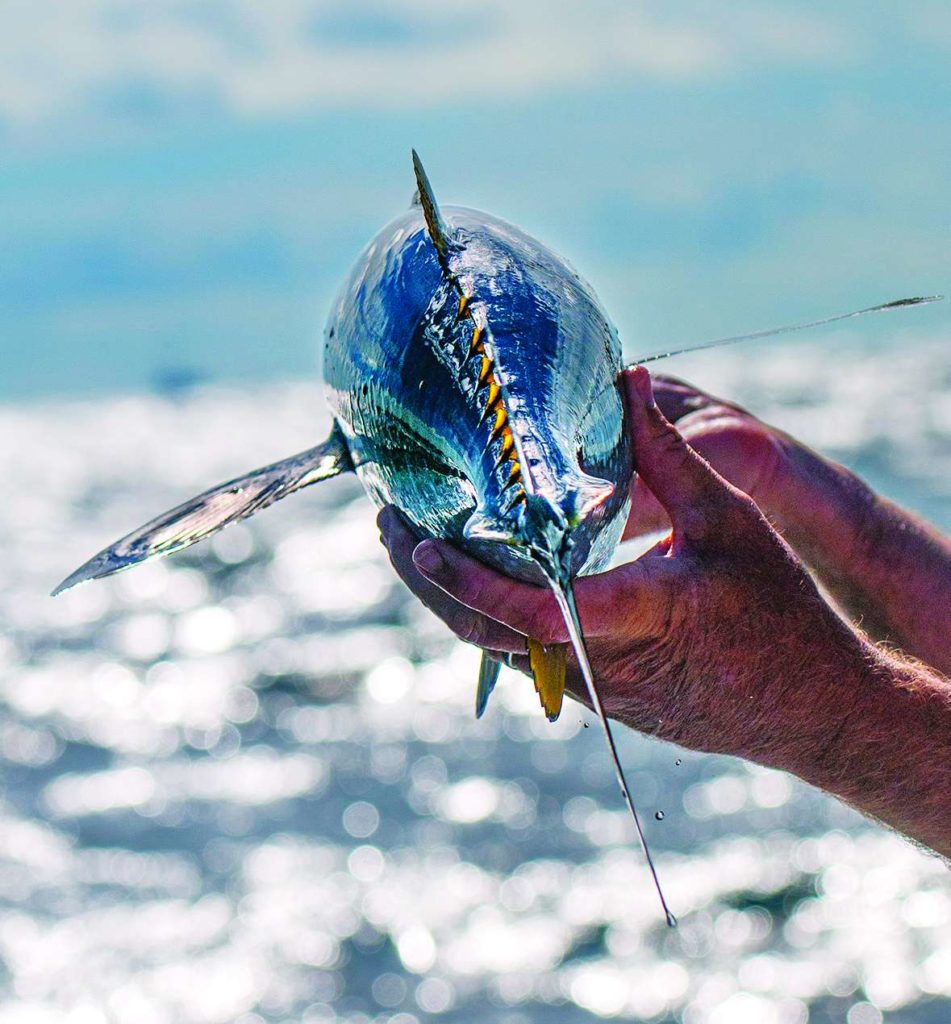
And these torpedoes are perfectly streamlined, their larger fins fitting perfectly into grooves so no part of these fins protrudes above the body surface. They lack the convex eyes of most fish; rather, a membrane covering tuna eyes remains flush with their heads, maintaining a surface with minimal drag. Keels and finlets in front of the tail provide stability and help reduce the turbulence in the water ahead of the tail.
Unlike most fishes with broad, flexible tails that bend to scoop water to move a fish forward, tunas derive tremendous thrust with thin, hard, lunate (moon-shaped) tails that beat constantly, capable of 10 to 12 or more beats per second. That relentless thrust accounts for the unstoppable runs that tuna make repeatedly when hooked.
As with other fast-swimming fishes, a primary limitation on top speed for tunas is cavitation, which at high speeds can slow them and even damage fins. (Cavitation is caused when negative pressure forms tiny air bubbles, which then collapse and form shock waves. Cavitation can damage the metal in propellers — and cause lesions in the fins of fish that swim “too fast,” such as tunas.)
Why Is a Tuna’s Meat Red?

While many of the characteristics that account for the tuna’s remarkable swimming ability are visible externally, some of the most astonishing adaptations are internal.
Certainly, that includes their extensive aerobic red muscle. Many fishes are ambush predators, relying on bursts of speed to feed but swimming slowly otherwise. Their bodies are mostly filled with white muscle — glycolytic fibers used in infrequent burst swimming. Tunas employ far more red muscle; their oxidative fibers prove ideal for long-haul, constant swimming without fatigue. Also, red muscle is full of myoglobin, which stores oxygen in the muscle tissues, for use as needed.
With so much red muscle demanding that much more oxygen, tunas’ gills — their organs for respiration, of course — are huge. For example, a tuna has seven to nine times more gill area for its size compared to relatively sedentary trout. And, not surprisingly, you’ve gotta have heart: Moving great amounts of oxygenated blood through their bodies requires tunas to have far larger hearts than most fish. Not only that, but another way tunas have advanced beyond most fishes — which have a constant heart rate — is their ability, like mammals, to vary their heart rate, maximizing efficiency.
Can Tuna Warm Their Bodies?
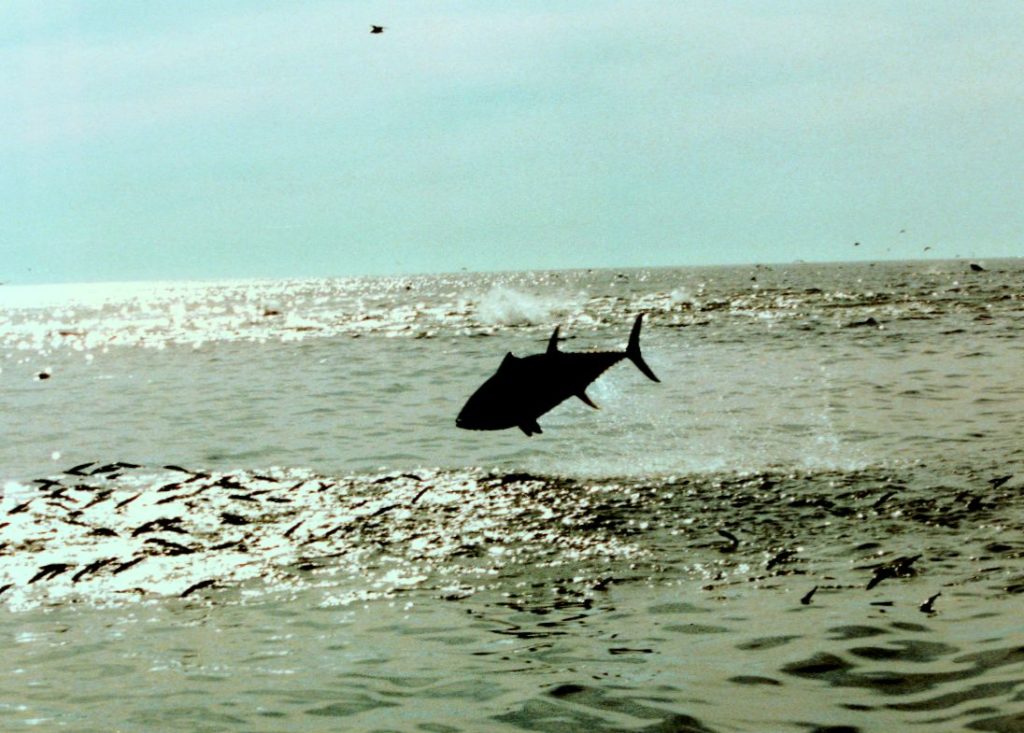
Arguably the most striking and sophisticated adaptation we can’t see — but science has revealed — is the ability of larger true tunas to heat certain areas of their bodies. They do this through what are known as the retia mirabilia (“wonderful net”), an ingenious counter-current vascular heat-exchange system. Basically, parallel veins and arteries exchange blood, allowing tunas to conserve metabolic heat via what is called regional endothermy, warming their red muscle tissue, brain, eyes and viscera well above ambient water temperatures.
This regional endothermy gives them the same metabolic advantage that Homo sapiens and other mammals enjoy. In fact, tunas couldn’t sustain the swim-or-die lifestyle nor be the relentless eating machines they are without that higher metabolic rate, allowing them to swim longer and faster, their brains and eyes to function better in cold water, and their viscera to digest more quickly and efficiently.
Further demonstrating the brilliance of their plumbing, larger tunas can shed excess heat from their bodies during periods of intense feeding (in essence, while doing wind sprints) via their retia mirabilia, which uses blood from gills cooled by ambient water to reduce body heat. This system also undoubtedly comes into play as one factor in the amazing endurance that hooked tunas show to resist their capture.
How Deep do Tuna Swim?
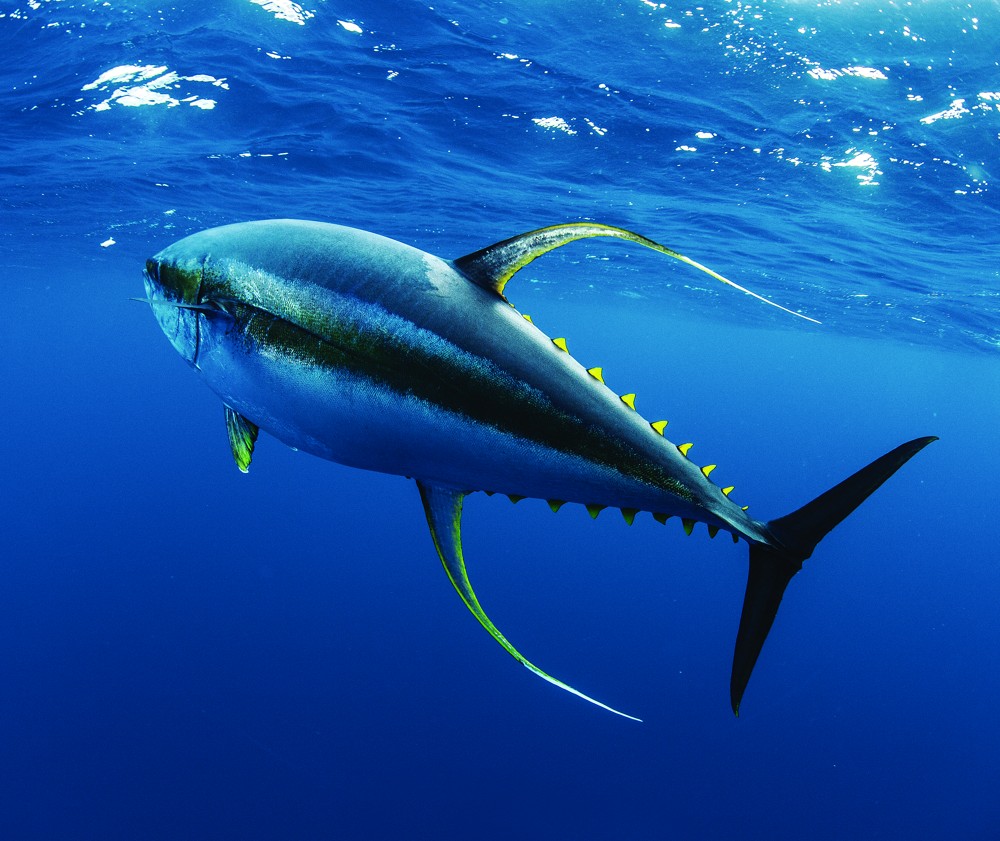
Much of the evolutionary success of tunas derives from their ability to transition from warm to cool waters in a way that most — less advanced, cold-blooded — fishes can’t manage.
Satellite tagging has revealed much about the feeding behavior and movements of large tunas, including their tendency to dive into deep, cold water. Scientists have documented that yellowfin feed at times in waters much deeper than once believed, but the bigeye is a champ in the deep-dive category, often feeding in waters exceeding 1,500 feet — and diving to more than 5,000 feet.
Apparently, these daytime deep divers are taking advantage of what’s known as the deep-scattering layer, a concentration of biomass (plankton and larger organisms) typically settling by day into 1,500 to 2,000 feet of water (which rises to or near the surface nightly). This is the same DSL in which swordfish feed during the day. Perhaps not so surprisingly, daytime swordy anglers have been hooking some large tuna while dropping deep.
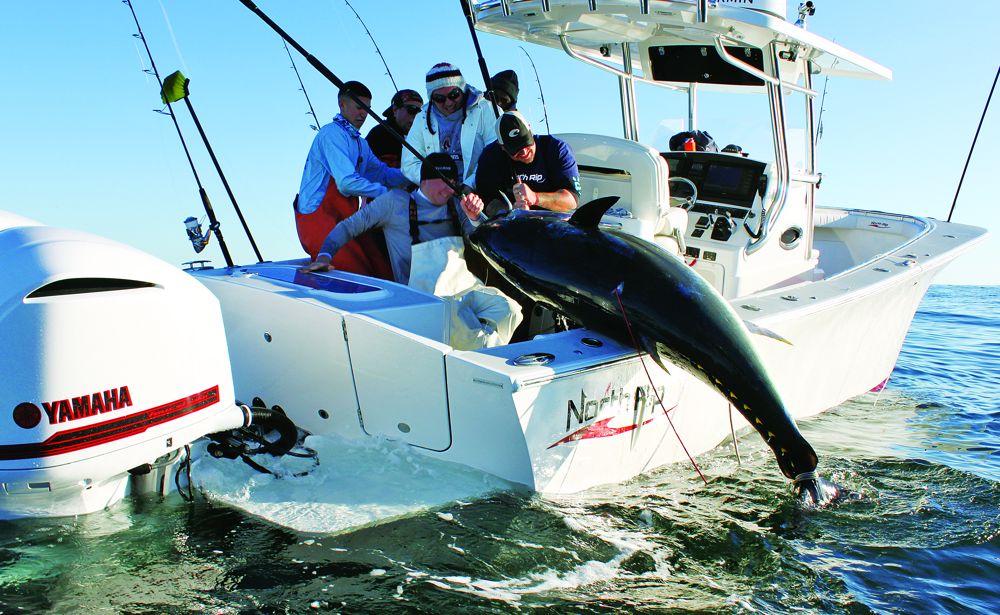
The other abyss-loving tuna is the bluefin. What large yellowfin, bigeye and bluefin have in common that enables them to feed at great depths is body mass. Juveniles and smaller species of tuna, lacking that, lose body heat too rapidly to allow them to leave near-surface waters for long.
Heat is lost in the frigid waters at depth, but rewarming occurs when tunas move up into warmer waters — where heating occurs at 100 to 1,000 times the rate that it’s lost. (This may be facilitated with blood bypassing lateral heat exchangers, so blood warmed and oxygenated in the gills by ambient, warmer waters enters the red muscle directly.)
What large tunas have in common that encourages them to feed so deep is simply an abundance of food in these cold but productive waters.
How Far do Tuna Travel?

The same motivation to find more and more food accounts for far-ranging horizontal movements as well as vertical dives into colder waters. So, for example, in the North Atlantic, the world’s largest giant bluefin are caught at the most northerly edges of the species’ range — the Canadian Maritimes — and in the South Pacific, the largest giants come from the most southern part of the southern bluefin’s range — off New Zealand’s South Island. In both instances, only the great body mass of giants provides enough thermal inertia — a small enough ratio of surface area to volume to prevent rapid cooling — so they can take advantage of vast schools of prey.
Large tunas are truly superfish, at the zenith of evolutionary design and success as predators among the ocean’s fishes. Little wonder they’re among the very most popular targets worldwide among saltwater recreational fishermen. The more we as anglers understand these magnificent fish, the more we can appreciate the opportunity to fish for and catch them.
Is Disaster Imminent for Tunas?
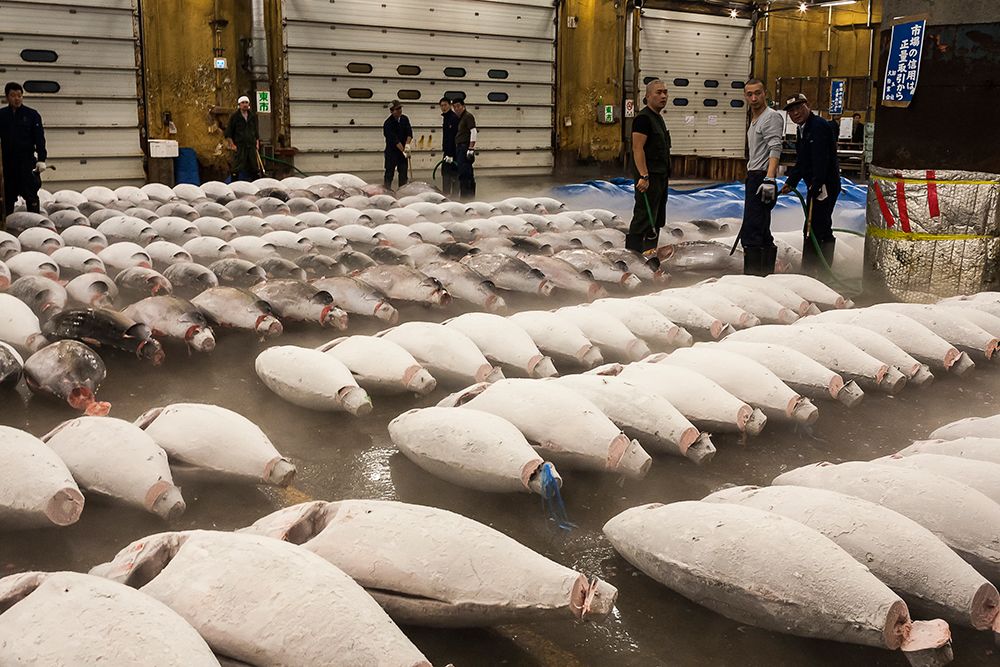
Tunas occasionally make it into mainstream news, and when they do, the circumstances (for continued survival of the species) usually sound pretty dire. However, a scientist at the University of Washington, found that just 30 percent of commercial tuna stocks had an abundance below that which would produce maximum sustainable yield.
Recently, Atlantic bluefin tuna have made a noticeable comeback. And anglers are taking advantage of it. In particular, many Northeast area anglers have spent the summer months targeting tuna of all sizes, both inshore and far offshore.“ The abundance of tunas and their relatives has declined from pre-industrial levels, but in general, they are at sustainable levels,” said Maite Pons, Ph.D..



